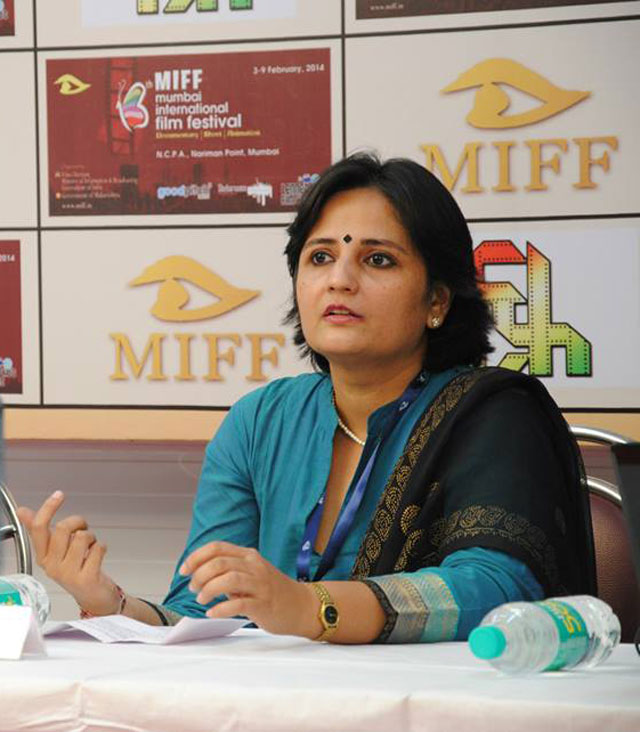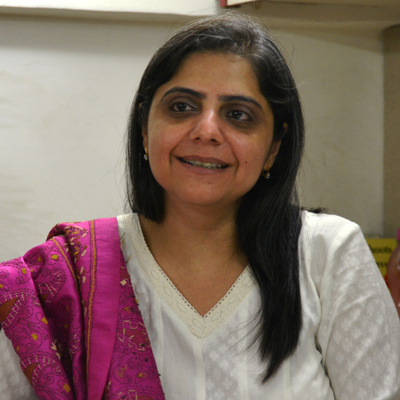
Even as cases of crime against women are on the rise, it becomes essential to promote women empowerment in the society. Started off in 1909, the UN theme for International Women’s Day 2015 that falls on 8 March is ‘Empowering Women, Empowering humanity: Picture It!’.
One medium of empowerment is to educate the female population and allow them more opportunities of employment. While the number of females in organisations is slowly increasing, there is yet a need for women to be respected in the work space. We spoke to a few women professionals from the industry and this is what they had to say.
Animation filmmaker Dhvani Desai narrates an incident of nearly two and a half decades ago, when the industry hadn’t even found ground in India. “There were very few computer animation studios and even fewer women in the industry. I remember when I would go for interviews for a job they would be hesitant to employ me as they felt that I would not be able to manage late/odd working hours. But I was able to convince them and instead of staying late I would instead go early morning,” she says. The troubles didn’t end here for her. When she established her own studio it was a difficult task at first to get assignments as well.

On the other hand, Arpita Kapoor from Mech Mocha Game Studios says that her friends and co-founder has been supportive of her work and whenever she felt a lack of support she fought back. But things are changing now she reveals. “With so many people taking a stand against recent #GamerGate upsurge, a lot of new and interesting changes have taken place. This year’s GDC had lots of sessions of making the industry more inclusive, hiring and retaining women in the game industry. Organisations such as IGDA have come in support; Intel just announced $300 million investment for increasing diversity in the technology industry, including gaming with help of IGDA and Feminist Frequency. So overall, it’s a great time to be a woman in the gaming industry.”
With technology progressing today, it is easier to be an independent professional but much tougher to get established. Says Supersikh co creator Eileen Alden, “There are low barriers to entry with independent work and self-publishing- just put your work on a website like Deviant Art or publish a small comic. But it is much harder to advance and grow. Fiona Staples is an established artist but is far outnumbered by male counterparts.”

On the other hand, Shruti Verma states that the diversity ratio in NASSCOM is close to 35 per cent. “NASSCOM launched its Diversity and Inclusivity Initiative way back in 2006 to encourage more women in the executive role in corporates. This initiative has been a combination of workshops, mentorships, awarding organizations leading in best diversity practices. This initiative has now progressed to embrace generational diversity, cultural and differently abled diversity as well,” she points out.
Even as all of them agree that more women are joining to work force today, a lot of encouragement is yet needed. “Smaller cities/centres still need to encourage, promote and treat women at par,” adds Dhvani. Eileen, who lives in the US, points out that there, the educational system has a strong support of equal opportunities for women which will help validate their skills. VFX professional Asmita Madhu says that the toughest part is to adjust to work after having marriage and after maternity leave.

The kids broadcasting space has seen a surge with nearly 10 channels catering to the young ones. Viacom18 EVP and kids cluster business head Nina Elavia Jaipuria is aware of the fact that not too many women hold leadership positions in organisations. “When the broadcast industry was formed, it was at a nascent stage. I am confident the current generation of women will hold leadership positions in future. This field deals with intangible products and human emotions and a woman is best suited for it,” she adds.
However, Punita Baid of Native Puppets has been noticing that fewer and fewer women are embracing a career in animation and there is need for an incentive plan to motivate them. Arpita opines that having diverse teams will result in women creating and playing more inclusive games. “The first push is to create more awareness about this industry amongst girls in technology. Game development industry gives them the creative and flexibility of working which is needed at some stages in their lifecycle,” says Shruti.

The gaming industry is rife with women being sexually portrayed on screen and Arpita feels that there is a need to move ahead and stop objectifying women in all art forms. “With recent internet movements including gamergate, feminist frequency etc, I think there is enough awareness to start designing progressive women characters in video games. As more publishers agree to market games with strong female characters, more developers will start designing such games,” she explains. Given a chance she would create games with strong, leading and decisive female characters.
Shruti quotes a study by Entertainment Software Association which states that women over the age of 18 make up nearly 36 per cent gamers while men were 35 per cent. The problem she says is in men creating games for men which results in some content being misogynist and condone violence against women. “Globally there is a movement against such portrayals. Women developers and gamers have been vocal since last one year against such representations. There is light at the end of the tunnel, realistic women characters have been featured in high-profile titles such as Portal, Half-Life 2 and Mirror’s Edge,” she says.

Television viewership of kids’ channels is on the other hand more male skewed says Nina. She says that the little girls end up watching general entertainment shows with their mothers where they get their dose of girl protagonists. That is why the central protagonists of kids’ animated shows are mostly male. “But protagonists don’t matter so much. It is the relationship they form with children,” she says.
The women are however divided on whether or not there is still prejudice against women in the industry. While Arpita feels there is, Punita, Nina, VFX professional Asmita Madhu and Shruti don’t think so. “Many organisations are working together to fix this. I think more inclusive workspaces, women at leadership roles and more games with strong leading female characters will encourage women to join and stay in the industry,” is Arpita’s advice.

Eileen says that the challenges are more in networking and getting advanced opportunities. “I think it always helps to have other women in the industry to talk to for support,” she says.
While most women seem to feel that situations are improving, there is still a lot left to be done to educate, encourage and lead women into being enterprising professionals. As technology creeps in the country’s minutest corners, with government support as well as family, the future will see women making more confident strides alongside the men.
